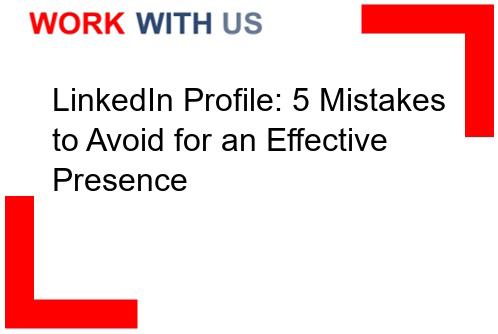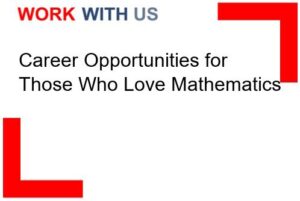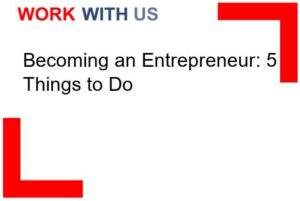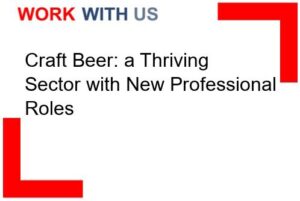LinkedIn Profile: 5 Mistakes to Avoid for an Effective Presence
In today’s digital age, having a strong online presence is crucial for professionals looking to advance their careers. LinkedIn, the world’s largest professional networking platform, plays a vital role in connecting individuals with potential employers, clients, and colleagues. However, many professionals unknowingly make mistakes on their LinkedIn profiles that can hinder their chances of making a positive impression. This article will highlight five common mistakes to avoid for an effective presence on LinkedIn.
First and foremost, one of the most significant mistakes professionals make on their LinkedIn profiles is having an incomplete or outdated profile. A complete profile is essential as it provides a comprehensive overview of an individual’s skills, experiences, and accomplishments. It is crucial to include a professional headshot, a compelling headline, and a well-written summary that highlights key achievements and career goals. Additionally, professionals should regularly update their profiles to reflect their most recent accomplishments, certifications, and job responsibilities. An incomplete or outdated profile can give the impression of a lack of attention to detail or a lack of commitment to professional growth.
Another common mistake professionals make on LinkedIn is failing to customize their URL. LinkedIn provides users with the option to create a personalized URL for their profiles, which can significantly enhance their professional branding. By default, LinkedIn assigns a URL that includes a series of random numbers and letters. However, professionals should take advantage of the opportunity to create a custom URL that includes their name or a variation of it. This simple step not only makes it easier for others to find and remember their profile but also adds a touch of professionalism.
Furthermore, professionals often neglect to optimize their LinkedIn profiles for search engines. Just like any other online platform, LinkedIn profiles can be discovered through search engines like Google. To increase the chances of appearing in relevant search results, professionals should strategically incorporate relevant keywords throughout their profiles. These keywords should reflect their industry, skills, and areas of expertise. By doing so, professionals can improve their visibility and attract the attention of potential employers or clients.
In addition to these technical mistakes, professionals sometimes overlook the importance of engaging with their LinkedIn network. LinkedIn is not just a platform for creating an online resume; it is a social networking site designed to foster connections and build relationships. Therefore, it is crucial to actively engage with connections by liking, commenting, and sharing relevant content. By doing so, professionals can establish themselves as thought leaders in their industry and expand their network.
Lastly, professionals often fail to showcase their work samples and recommendations on their LinkedIn profiles. LinkedIn allows users to upload documents, presentations, and links to their profiles, providing an opportunity to showcase their work and demonstrate their expertise. Additionally, recommendations from colleagues, clients, or supervisors can significantly enhance a professional’s credibility. By including work samples and recommendations, professionals can provide tangible evidence of their skills and accomplishments, making their profiles more compelling to potential employers or clients.
In conclusion, an effective presence on LinkedIn is crucial for professionals looking to advance their careers. By avoiding common mistakes such as having an incomplete or outdated profile, failing to customize their URL, neglecting search engine optimization, not engaging with their network, and failing to showcase their work samples and recommendations, professionals can significantly enhance their LinkedIn profiles. By doing so, they increase their chances of making a positive impression, attracting potential employers or clients, and ultimately achieving their career goals.
Optimizing your linkedin profile: 5 key elements for an effective presence
In today’s digital age, having a strong online presence is crucial for professional success. LinkedIn, the world’s largest professional networking platform, offers individuals the opportunity to showcase their skills, experience, and accomplishments to a global audience. However, simply having a LinkedIn profile is not enough; it is essential to optimize it to maximize its effectiveness. Here are five key elements to consider when optimizing your LinkedIn profile for an impactful online presence.
A Compelling Headline that Captures Attention
The headline is the first thing people see when they visit your LinkedIn profile. It is crucial to craft a compelling headline that grabs attention and clearly communicates your professional identity. Instead of simply stating your job title, consider incorporating keywords that highlight your expertise and unique value proposition. For example, instead of “Marketing Manager,” you could write “Results-driven Marketing Manager | Digital Strategy | Brand Development.” This approach not only showcases your current role but also emphasizes your specific skills and areas of expertise.
A Well-Written and Engaging Summary
The summary section of your LinkedIn profile provides an opportunity to tell your professional story and make a lasting impression. It should be concise, engaging, and highlight your key achievements and career goals. Start by introducing yourself and providing a brief overview of your professional background. Then, focus on showcasing your accomplishments, skills, and areas of expertise. Use bullet points or short paragraphs to make it easy to read and scan. Remember to include relevant keywords to enhance your profile’s visibility in search results.
Showcasing Professional Experience and Achievements
Your professional experience section is where you can highlight your career progression, responsibilities, and notable achievements. Start each entry with a strong action verb to describe your role, such as “Managed,” “Led,” or “Implemented.” Be specific about your accomplishments and quantify them whenever possible. For example, instead of saying “Increased sales,” you could say “Achieved a 20% increase in sales within six months.” Additionally, consider adding multimedia elements, such as project presentations or links to articles you have written, to provide further evidence of your expertise.
Building a Strong Network and Engaging with Others
LinkedIn is a networking platform, and building a strong network is essential for expanding your professional reach. Connect with colleagues, industry peers, and thought leaders to grow your network. Engage with others by liking, commenting, and sharing their posts to establish yourself as an active and valuable member of the LinkedIn community. Join relevant groups and participate in discussions to showcase your expertise and expand your network further. Remember, networking is a two-way street, so be proactive in supporting and helping others as well.
Showcasing Skills, Recommendations, and Endorsements
LinkedIn allows you to showcase your skills, receive endorsements, and gather recommendations from colleagues and clients. Take advantage of this feature by listing your key skills and ensuring they align with your professional goals. Seek endorsements from individuals who can vouch for your expertise in those areas. Recommendations provide social proof of your abilities and can significantly enhance your credibility. Request recommendations from former colleagues, supervisors, or clients who can speak to your strengths and the value you bring to the table.
In conclusion, optimizing your LinkedIn profile is crucial for establishing a strong online presence and maximizing your professional opportunities. Craft a compelling headline, write an engaging summary, showcase your experience and achievements, build a strong network, and leverage skills, recommendations, and endorsements. By implementing these five key elements, you can create an effective LinkedIn profile that attracts attention, showcases your expertise, and opens doors to new career prospects. Remember, LinkedIn is not just a digital resume but a powerful tool for personal branding and professional networking.
Crafting a compelling linkedin headline: avoiding common mistakes
Crafting a compelling LinkedIn headline is crucial for professionals looking to make a strong impression on the platform. A well-crafted headline can grab the attention of potential employers, clients, or collaborators, and entice them to click on your profile to learn more about you. However, many LinkedIn users make common mistakes when it comes to their headlines, which can hinder their chances of standing out in a crowded professional network.
One common mistake is using a generic headline that fails to differentiate oneself from others. Instead of simply stating one’s job title or industry, professionals should aim to showcase their unique value proposition. For example, instead of using a headline like “Marketing Manager,” one could opt for something more specific and attention-grabbing like “Results-driven Marketing Manager with a track record of driving revenue growth through innovative digital strategies.” By highlighting specific achievements or skills, professionals can immediately capture the interest of those who come across their profile.
The Importance of Keywords
Another mistake to avoid is neglecting the use of relevant keywords in the headline. LinkedIn’s search algorithm heavily relies on keywords to match users with relevant profiles. Therefore, it is essential to include keywords that are commonly used in your industry or profession. For instance, if you are a software engineer, including keywords such as “software development,” “programming,” or “web development” can significantly increase your visibility to recruiters or potential clients searching for those skills.
Showcasing Expertise and Specializations
LinkedIn headlines also provide an opportunity to showcase expertise and specializations. Professionals should consider including specific areas of expertise or industries they specialize in to attract the right audience. For example, a headline like “Financial Analyst specializing in mergers and acquisitions” immediately communicates the individual’s expertise and can attract recruiters or companies specifically looking for professionals with that skill set.
Avoiding Buzzwords and Jargon
While it is important to include relevant keywords, professionals should be cautious about using buzzwords and jargon in their headlines. Overused buzzwords like “innovative,” “strategic,” or “results-oriented” have become cliché and fail to make a lasting impact. Instead, professionals should focus on using clear and concise language that effectively communicates their unique value proposition. By avoiding buzzwords and jargon, professionals can differentiate themselves from the competition and make a stronger impression on potential connections.
Tailoring the Headline to the Target Audience
One mistake that professionals often make is failing to tailor their headline to their target audience. It is essential to consider who you want to attract and what they are looking for in a professional. For example, if you are seeking a job in a specific industry, it would be beneficial to include relevant industry-specific keywords or phrases in your headline. By aligning your headline with the needs and expectations of your target audience, you increase your chances of capturing their attention and engaging them further.
Updating and Testing Headlines
Crafting a compelling LinkedIn headline is not a one-time task. It is important to regularly update and test different headlines to see which ones resonate best with your target audience. LinkedIn provides users with the ability to track profile views and engagement metrics, allowing you to assess the effectiveness of your headline. By experimenting with different headlines and analyzing the results, professionals can refine their approach and continuously improve their LinkedIn presence.
In conclusion, crafting a compelling LinkedIn headline requires careful consideration and attention to detail. By avoiding common mistakes such as using generic language, neglecting keywords, relying on buzzwords, failing to showcase expertise, and not tailoring the headline to the target audience, professionals can create a headline that stands out and captures the attention of potential employers, clients, or collaborators. Regularly updating and testing headlines is also crucial to ensure that your LinkedIn profile remains relevant and engaging. With a well-crafted headline, professionals can increase their visibility, attract the right audience, and open doors to new opportunities in their careers.
Building a strong linkedin network: strategies for effective connection building
LinkedIn has become an essential platform for professionals to connect, network, and advance their careers. However, simply having a LinkedIn profile is not enough; building a strong network requires strategic efforts. This article will explore various strategies that can help individuals effectively build connections on LinkedIn.
Craft a Compelling Profile: A well-crafted LinkedIn profile is the foundation for building a strong network. Start by creating a professional headline that accurately reflects your expertise and goals. Use a high-quality profile picture and write a concise yet engaging summary that highlights your skills, experiences, and aspirations. Remember to include relevant keywords to enhance your visibility in search results.
Personalize Connection Requests: When sending connection requests, avoid using the generic LinkedIn message. Instead, take a few moments to personalize each request. Mention how you came across their profile, express your interest in connecting, and explain how you believe the connection could be mutually beneficial. Personalized requests demonstrate sincerity and increase the likelihood of acceptance.
Engage with Relevant Content: Actively engaging with relevant content on LinkedIn is an effective way to expand your network. Regularly like, comment, and share posts that align with your professional interests. This not only helps you establish yourself as a thought leader but also increases your visibility among potential connections who share similar interests.
Join and Participate in Groups: LinkedIn groups provide an excellent opportunity to connect with like-minded professionals in your industry or field of interest. Join groups that align with your goals and actively participate in discussions. Share valuable insights, ask thoughtful questions, and engage with other group members. This not only helps you expand your network but also positions you as an active and knowledgeable professional.
Utilize Advanced Search Filters: LinkedIn’s advanced search filters allow you to narrow down your search for potential connections based on specific criteria. Use filters such as location, industry, job title, and company size to find professionals who align with your networking goals. This targeted approach helps you connect with individuals who are more likely to be interested in your profile and can provide valuable opportunities.
Attend and Organize Events: LinkedIn offers various virtual and in-person events where professionals can connect and network. Attend industry-specific conferences, webinars, and workshops to meet professionals in your field. Additionally, consider organizing your own events to showcase your expertise and attract like-minded individuals. Events provide an excellent platform for building meaningful connections and expanding your network.
Request Recommendations: Recommendations on LinkedIn act as testimonials that validate your skills and expertise. Request recommendations from colleagues, supervisors, or clients who can vouch for your abilities. These recommendations not only enhance your profile’s credibility but also serve as a powerful networking tool. When potential connections see positive recommendations, they are more likely to accept your connection request.
Be Proactive in Building Relationships: Building a strong LinkedIn network requires proactive efforts. Reach out to potential connections, engage in meaningful conversations, and offer assistance whenever possible. Building relationships takes time and effort, so be patient and persistent. Remember, networking is a two-way street, so be willing to offer support and value to your connections as well.
Share Your Expertise: LinkedIn’s publishing platform allows you to share long-form articles and insights with your network. Leverage this feature to showcase your expertise and provide valuable content to your connections. Sharing well-researched articles, industry trends, or thought-provoking insights can help you establish yourself as a knowledgeable professional and attract like-minded connections.
10. Stay Active and Consistent: Building a strong LinkedIn network is an ongoing process. Stay active on the platform by regularly posting updates, sharing relevant content, and engaging with your connections. Consistency is key to maintaining visibility and building lasting relationships. Set aside dedicated time each week to nurture your network and ensure your LinkedIn presence remains strong.
In conclusion, building a strong LinkedIn network requires a strategic approach. By crafting a compelling profile, personalizing connection requests, engaging with relevant content, joining groups, utilizing advanced search filters, attending events, requesting recommendations, being proactive in building relationships, sharing expertise, and staying active, professionals can effectively expand their network and unlock valuable opportunities on LinkedIn.
Enhancing your linkedin profile: avoiding pitfalls in the about section
LinkedIn has become an essential platform for professionals to showcase their skills, network with industry peers, and explore new career opportunities. One crucial aspect of a LinkedIn profile is the “About” section, which provides a concise summary of an individual’s professional background and aspirations. However, many users often overlook the importance of this section and fail to optimize it effectively. To help you avoid common pitfalls and make the most of your LinkedIn profile, here are some key tips to enhance your About section.
1. Craft a Compelling Introduction
The About section serves as your virtual elevator pitch, capturing the attention of potential employers or connections within seconds. Start by crafting a compelling introduction that highlights your unique value proposition. Avoid generic statements and instead focus on showcasing your expertise, achievements, and career goals. Use concise and impactful language to make a strong first impression and entice readers to explore your profile further.
2. Showcase Your Achievements and Skills
One common mistake individuals make in their About section is simply listing their job titles and responsibilities. Instead, take this opportunity to highlight your key achievements and skills. Use quantifiable metrics whenever possible to demonstrate the impact you have made in previous roles. This not only adds credibility to your profile but also helps potential employers or clients understand the value you can bring to their organization.
3. Tailor Your Message to Your Target Audience
LinkedIn is a platform that caters to a diverse range of professionals. When writing your About section, consider who your target audience is and tailor your message accordingly. If you are seeking new job opportunities, focus on your relevant experience and career goals. If you are looking to connect with industry peers, highlight your expertise and areas of interest. By customizing your message, you can effectively engage with the right audience and increase your chances of making meaningful connections.
4. Utilize Keywords Strategically
LinkedIn profiles are often searched using keywords related to specific industries, job titles, or skills. To ensure your profile appears in relevant searches, strategically incorporate keywords throughout your About section. Research industry-specific terms and phrases that are commonly used and integrate them naturally into your content. This will not only improve your profile’s visibility but also demonstrate your familiarity with industry trends and terminology.
5. Keep it Concise and Engaging
While it is important to provide a comprehensive overview of your professional background, it is equally crucial to keep your About section concise and engaging. Avoid lengthy paragraphs and instead use bullet points or short sentences to convey your key points. Use subheadings to break up the text and make it easier to read. Remember, LinkedIn is a platform where users often skim through profiles, so make sure your About section is visually appealing and captures attention quickly.
Exploring Interesting Topics on LinkedIn
LinkedIn is not just a platform for creating a professional profile; it also offers a wealth of resources and opportunities for professional growth and networking. Here are some interesting topics to explore on LinkedIn:
1. Industry Insights and Trends
LinkedIn is a hub for industry professionals, making it an excellent source for staying updated on the latest insights and trends. Follow influential thought leaders, join relevant industry groups, and engage in discussions to gain valuable knowledge and expand your professional network. By actively participating in industry conversations, you can establish yourself as a knowledgeable and engaged professional. Personal Branding and Career Development
LinkedIn provides numerous resources and articles on personal branding and career development. Explore topics such as building a strong personal brand, effective networking strategies, and tips for advancing your career. By leveraging these resources, you can enhance your professional skills, improve your visibility, and increase your chances of career success. Diversity and Inclusion
LinkedIn is committed to promoting diversity and inclusion in the workplace. Explore content and groups dedicated to diversity and inclusion initiatives, and engage in conversations surrounding these topics. By actively participating in discussions and sharing your insights, you can contribute to creating a more inclusive professional environment. Entrepreneurship and Startups
LinkedIn is a valuable platform for entrepreneurs and individuals interested in startups. Connect with like-minded professionals, join startup-focused groups, and follow influential entrepreneurs to gain insights into the world of entrepreneurship. Engage in discussions, share your experiences, and seek advice from experienced professionals to fuel your entrepreneurial journey. Professional Development Courses and Certifications
LinkedIn Learning offers a wide range of professional development courses and certifications. Explore topics relevant to your industry or areas of interest and invest in your professional growth. Completing courses and earning certifications not only enhances your skills but also adds credibility to your LinkedIn profile.
In conclusion, optimizing your LinkedIn profile’s About section is crucial for making a strong impression and attracting the right opportunities. Craft a compelling introduction, showcase your achievements, tailor your message, utilize keywords strategically, and keep it concise and engaging. Additionally, explore interesting topics on LinkedIn such as industry insights, personal branding, diversity and inclusion, entrepreneurship, and professional development to further enhance your professional journey. By leveraging the power of LinkedIn, you can unlock a world of opportunities and take your career to new heights.



